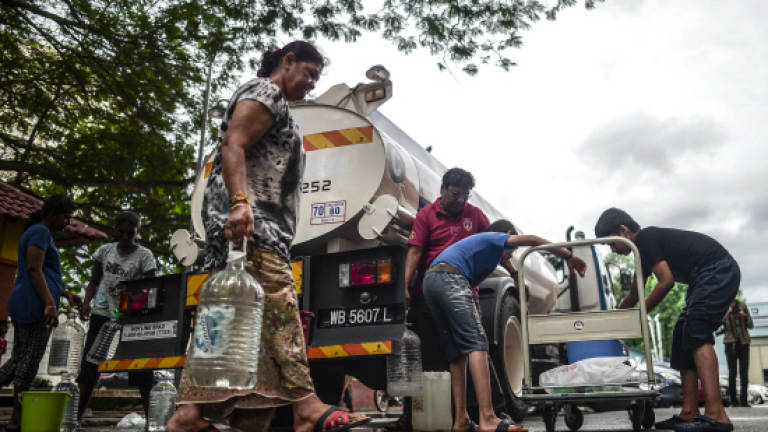Year in review 2016 - Trying time for millions in Klang Valley

IT was a strange year for millions of residents in the Klang Valley when the taps ran dry on two occasions and on the eve of two major celebrations.
Hundreds took to social media to vent their frustrations against the authorities while scenes unfolded in several affluent neighbourhoods where residents carried buckets of water from tankers supplying their areas.
The first major disruption took place in late September when the Sungai Semenyih treatment plant had to be shut down on several occasions due to chemical contamination in Sungai Semenyih that supplies raw water.
Although Syarikat Bekalan Air Selangor Sdn Bhd (Syabas) quickly acted to alert consumers the fallout from the shutdown was severe for the water treatment company.
The supply disruption had affected some 350,000 premises in four major districts in Selangor, namely, Hulu Langat, Kuala Langat, Sepang and Petaling.
It persisted through October, with the plant being shut down a further three times since its first closure on Sept 22.
On Oct 7, several areas in the districts of Kuala Lumpur, Petaling, and Hulu Langat experienced temporary water disruption after the Sungai Langat and Cheras water treatment plants were shut down due to odour from pollution, with the contamination source suspected to be from Semantan River in Pahang.
On Oct 23, the Sungai Semenyih water treatment plant was again forced to close after another case of pollution, affecting the same four districts that were hit in September. This shutdown left hundreds of thousands of Hindus preparing for Deepavali fuming as preparations for the festivities were disrupted.
The plant only resumed full operations on Oct 29 after multiple closures following pollution allegedly due to industrial wastes from Nilai, Negri Sembilan.
If the Deepavali situation was not bad enough, Klang Valley residents had to suffer yet another water disruption, this time during the week leading up to Christmas.
This time the authorities claimed that it could not be avoided as remedial works had to be carried out by Tenaga Nasional Berhad (TNB) at its Bukit Badong substation in Hulu Selangor on Dec 19 to avoid a complete breakdown at the station.
The repairs disrupted water supply as it provides power to three main water treatment plants in Selangor and the Federal Territory, with Syabas initially claiming the disruption would take up to six days from Dec 19.
However, angry Malaysians complained the authority was being insensitive to those celebrating Christmas and the work could have been scheduled at another time.
This shutdown had affected water supply to 814 areas involving some four million consumers.
However, following pressure from various quarters, water supply in all the affected areas were fully restored ahead of schedule on Dec 22.
Klang Valley aside, it was also not all rosy for those residing in other states.
Few could forget the El Nino phenomenon, which began in March, that hit the country.
Although sporadic light rain brought on by cloud seeding might have provided folk in Peninsular Malaysia reprieve from the unbearable heat, it has done little to alleviate the country's water crisis.
With dams drying up, several states, including Johor and Perlis, began rationing water in their bid to retain water levels.
Fifteen water treatment plants in five states (Pahang, Kedah, Johor, Perlis and Sabah) were affected by the phenomenon involving 27,000 accounts in Peninsular Malaysia and 1,200 accounts in Sabah.
The Natural Resources and Environment Ministry said on May 4 that seven dams across the country had water levels that are less than 50% of their full capacity, including the Bukit Merah Dam in Perak, which is the area's main water source for agricultural and domestic use.
Twelve other dams across the country also contained water ranging from only 54.5% to 79.76% of their full capacity. It was not until July that all the major dams saw water returning to safe levels.